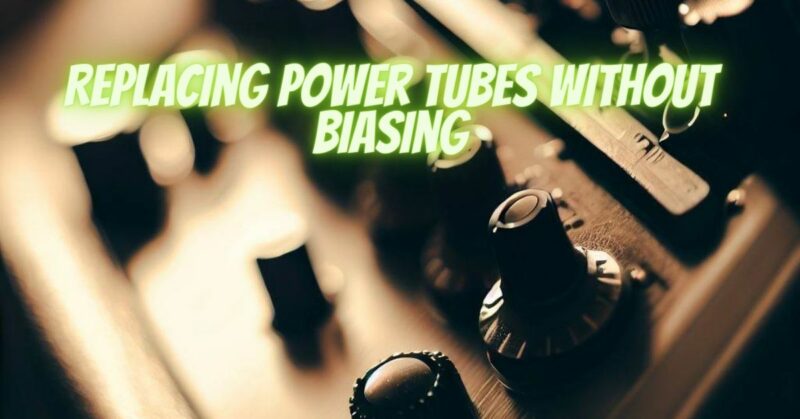Tube amplifiers, known for their warm and rich sound, utilize power tubes for output amplification. Over time, these power tubes may wear out and require replacement. While the ideal practice is to bias the amplifier after replacing power tubes, some enthusiasts wonder if it is possible to swap power tubes without biasing. In this article, we will explore the implications of replacing power tubes without biasing, the risks involved, and the considerations that should be taken into account.
- Understanding Biasing:
Biasing is the process of adjusting the voltage applied to the power tubes to ensure they operate within their optimal range. Proper biasing is essential to achieve balanced performance, prevent tube damage, and avoid potential issues with the amplifier.
- Risks of Replacing Power Tubes Without Biasing:
When you replace power tubes without biasing, you expose your amplifier to the following risks:
a. Tube Mismatch: Tubes from different production batches can have variations in characteristics, even if they are the same model. Without biasing, there is a chance of mismatched tubes, leading to imbalanced performance and potential issues.
b. Reduced Tube Life: Running new power tubes at an incorrect bias level can shorten their lifespan. Overbiased tubes may wear out quickly, while underbiased tubes may overheat and fail prematurely.
c. Uneven Sound: Without proper biasing, the power tubes may operate at different levels, leading to an unbalanced sound with uneven volume and tone between channels.
d. Damage to Amp Components: Incorrectly biased power tubes can stress other components in the amplifier, leading to potential damage and costly repairs.
- Considerations for Replacing Power Tubes:
While biasing is crucial for optimal performance, some amplifiers are designed to operate with self-biasing circuits or fixed bias, which automatically adjust the bias level when power tubes are replaced. In such cases, the need for manual biasing may be eliminated.
Before attempting to replace power tubes without biasing, consider the following:
a. Self-Biasing Circuits: Check if your amplifier has a self-biasing circuit. If it does, the risk of replacing power tubes without biasing is reduced, but it is still advisable to monitor the performance of the new tubes.
b. Fixed Bias: Amplifiers with fixed bias systems may not require bias adjustments, as long as the new power tubes are of the same type and rating as the original tubes.
c. Monitor Tube Performance: After replacing the power tubes, closely monitor the amplifier’s performance. Pay attention to any unusual sounds, changes in volume, or excessive heat from the tubes.
- Seeking Professional Help:
If you are uncertain about biasing or lack experience with amplifier maintenance, it is best to seek the assistance of a qualified technician. A professional can ensure that the new power tubes are correctly installed and the amplifier is operating optimally.
Replacing power tubes without biasing is not recommended, as it can lead to imbalanced performance, reduced tube life, and potential damage to the amplifier. Proper biasing is crucial for achieving optimal sound quality and ensuring the longevity of the power tubes and other amplifier components. If your amplifier has a self-biasing circuit or a fixed bias system, the risks may be minimized, but monitoring the performance of the new tubes is still essential. When in doubt, it is always best to seek professional help to ensure that your tube amplifier operates safely and delivers the warm and enchanting sound that it is known for.


